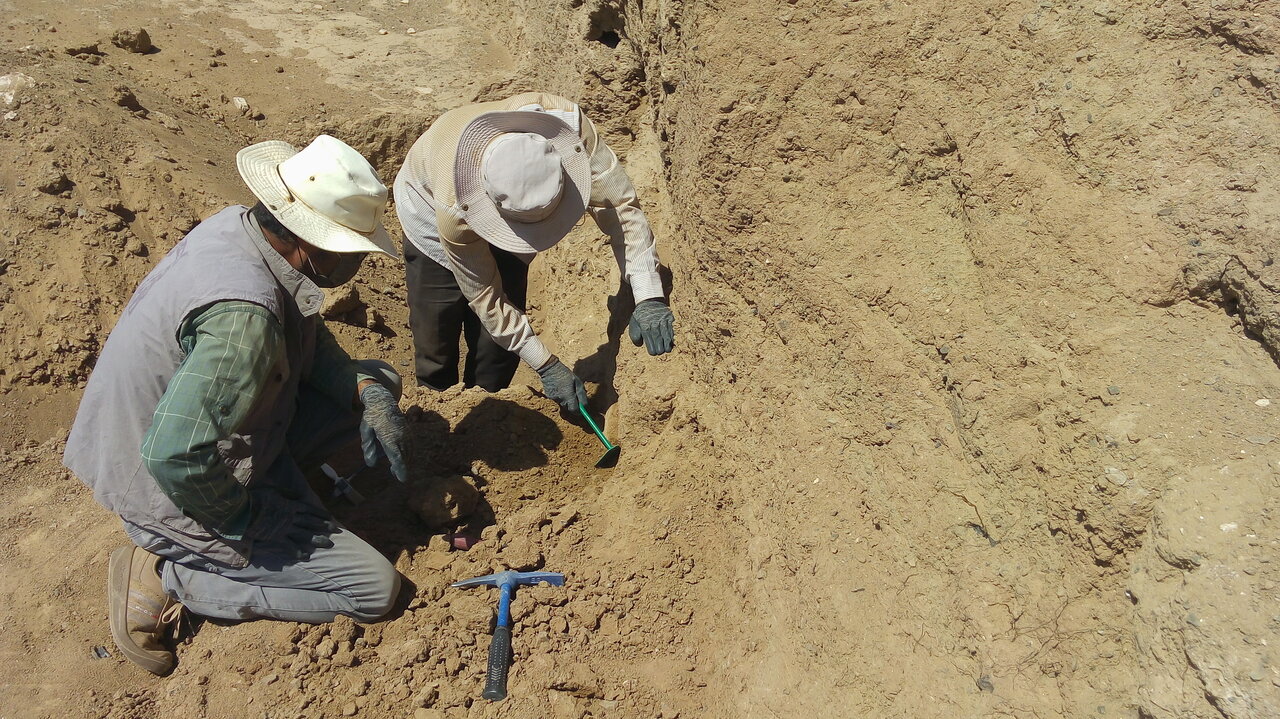Archaeologist elaborates on Sassanid temple discovered in northeast Iran

TEHRAN – Iranian archaeologist Meysam Labbaf-Khaniki has recently elaborated on a series of excavations that led to the discovery of an ancient fire temple estimated to date from the Sassanid era.
Discovered in Bazeh Hur, which is situated some 70 km from Mashhad, the capital of Khorasan Razavi province, the sanctuary is reminiscent of pure Sassanid architecture in northeast Iran.
In addition to numerous pieces of pottery and glass, pieces of plaster bearing Middle Persian script have provided valuable information about the nature of this fire temple and its founders, ILNA quoted Labbaf-Khaniki as saying on Monday.
He said the interior spaces are decorated with exquisite stucco and its central core was built using high-quality bricks and plaster materials.”
“In addition to numerous pieces of pottery and glass, pieces of plaster bearing Middle Persian script have provided valuable information about the nature of this fire temple and its founders.”
The findings of the last season indicate that scenes of high-ranking officials, feasts, hunting, and performing ritual ceremonies were displayed on the walls of this fire temple using plaster, the archaeologist said.
“Unfortunately, most of them have been suffered by natural events and human interventions over time.”
Based on the significant size of this religious collection, the quality of the materials used, the style and theme of the architectural decorations, the geographical location, and the way of using the architectural spaces, this fire temple is considered the most important place of worship in northeastern Iran during the Sassanid period, and the research on identifying the exact nature It is still going on.
As mentioned by the archaeologist, the temple is in the form of Chahar-Taq, which is an ancient square-shaped brick room surmounted by a domed roof.
Many experts believe it is an exemplar of fine architecture in the time of the Sassanids. “Chahar-Taq (Chahartaq) is a clear example of architectural knowledge and construction technology in the Sassanid period, tourism official Ahmad Danaeinia said earlier this month.
According to sources, Bazeh Hur had been studied by architect/archaeologist Ernst Hertzfeld (1879–1948) and art historian/archaeologist Andre Godard (1881–1965) who wrote articles about the monument.
The Sassanid era (224 CE–651) is of very high importance in the history of Iran. Under Sassanids, Persian art and architecture experienced a general renaissance. Architecture often took grandiose proportions, such as palaces at Ctesiphon, Firuzabad, and Sarvestan, which are amongst the highlights of the ensemble.
Crafts such as metalwork and gem engraving grew highly sophisticated, yet scholarship was encouraged by the state. In those years, works from both the East and West were translated into Pahlavi, the language of the Sassanians.
The Sassanid archaeological landscape also represents a highly efficient system of land use and strategic utilization of natural topography in the creation of the earliest cultural centers of the Sassanid civilization.
In 2018, UNESCO added an ensemble of Sassanian historical cities in southern Iran — titled “Sassanid Archaeological Landscape of Fars Region”-- to its World Heritage list. The ensemble comprises eight archaeological sites situated in three geographical parts of Firuzabad, Bishapur, and Sarvestan. It reflects the optimized utilization of natural topography and bears witness to the influence of Achaemenid and Parthian cultural traditions and Roman art that later made a significant impact on the architecture and artistic styles of the Islamic era.
AFM
Leave a Comment